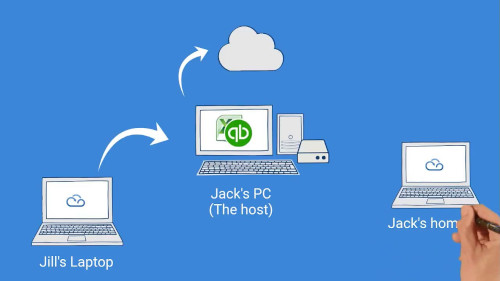MyQuickCloud is all about enabling team collaboration. With the rising trend of Quiet Quitting, we explore the trend and what you can do to support your team better, especially if you can relate to this article.
When was the last time you clocked in, sat down for eight hours, and clocked out? No staying extra hours to finish out a project or volunteering for tasks beyond your assignment workload.
Gen Z and Millennials call this quiet quitting. Find out why social media is trending and how companies can address it.
What does quiet quitting mean?
Content creator Zaiad Khan coined the term quiet quitting in a video on TikTok.
Currently with 3.5 million views, the Tiktoker explains what quiet quitting is: Reclaiming work-life balance and rejecting hustle culture.
TikTok users quickly shared their experiences with quiet quitting – the hashtag now has 97.6 million views.
Although it includes the word “quitting,” it has nothing to do with it.
Quiet quitting involves completing your work responsibilities without going above and beyond. Taking regular time off and not looking for additional tasks or projects are examples of this.
Around half of the U.S. workforce is already quitting quietly, with work engagement dropping by the second quarter of 2022, according to a Gallup survey.
The Washington Post recently examined how women and people of color are already at a disadvantage in the workplace.
Their mistakes are punished harsher, they’re more likely to burn out, and they’re less likely to be promoted. Consequently, quiet quitting could further hinder their progress. For many people of color, it’s not an option.
Others see it as a form of rebellion. For some, it’s an odd way to describe something they’ve been doing for decades.

Quiet quitting and how companies should address it
Several critics of this term claim it misrepresents setting boundaries at work and maintaining a healthy work-life balance.
Additionally, this term emphasizes how many companies exploit their employees and expect them to perform above their capabilities without paying them adequately.
As a result of the Great Resignation of 2021, employees resigned in mass numbers from their jobs.
Several factors contributed to this trend, including low wages, high living costs, health concerns related to COVID-19, and a desire to work remotely. Burnout is another factor to consider.
Therefore, instead of seeing quiet quitting as a trend that harms the workplace, employers should view it as an opportunity to improve it.
A poor work environment is what causes employees to “quiet quit” – and the data proves it.
Employees’ unwillingness to go the extra mile is associated with poor bosses, according to a study by HBR.
Researchers found that managers who balanced business needs with employees’ needs had the highest percentage of employees willing to go the extra mile – 62% to be exact, with only 3% quiet quitting.
In contrast, the managers who ranked the lowest in the category had only 20% of their employees willing to go the extra mile and 14% quiet quitting.
If an employee receives adequate support from their manager, is given growth opportunities, and is rewarded for their work, they will be motivated to perform at their best.
It’s up to employers to create an environment that allows that to happen. You can start by setting boundaries around work hours – this can be done by implementing a no-contact policy when you are out of the office.
Employees will likely benefit most from management training. Building trust with employees and promoting a positive work environment can be achieved through growth coaching, skill development, and pay transparency training.
Set up quarterly career chats between managers and their direct reports to discuss areas of interest and focus, current or expected challenges, etc. Quiet quitting is less likely to occur when managers build relationships with their teams.
What to Do if You’re Managing a Quiet Quitter
A quiet quitter on your team is likely the result of a lack of trust between you and the employee.
From there, what do you do? Relationships need to be worked on.
To do this, you should have regular 1-on-1 meetings in which you build your relationship. Share resources to support their growth and find common ground, listen actively, and pay attention to their interests.
In addition, set quarterly career chats to discuss their current trajectory. Here are key areas to discuss:
- A person’s interests and values
- Weaknesses and gaps
- Satisfaction at work
- Developing a career plan
Create an action plan with them once you have a clear understanding of what they’re working towards and what’s missing in their role.
Set up a schedule for checking in to discuss progress, obstacles, and opportunities.
The next step is to be consistent and reliable. Putting it personally – would you keep a friend who didn’t keep their word and who you couldn’t trust? Most likely not. Therefore, why should employer-employee relationships be any different? As they affect your career, these traits are even more crucial.
Last but not least, treat your employees with respect. Engaged employees do not have to give their all to succeed (and they shouldn’t). If your team does not prioritize work-life balance, you’ll end up with a long list of quiet quitters.
Quiet quitters are usually those who lack the right support. Providing what they need will result in an engaged performer.





